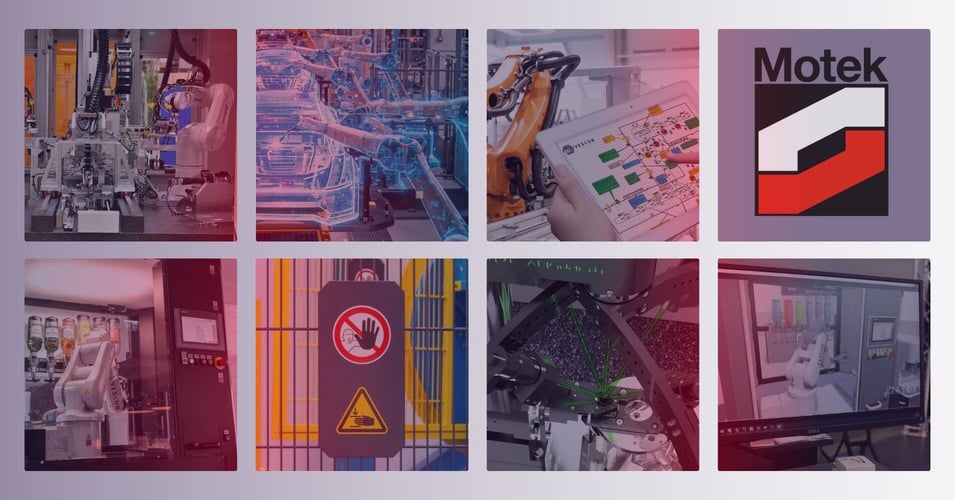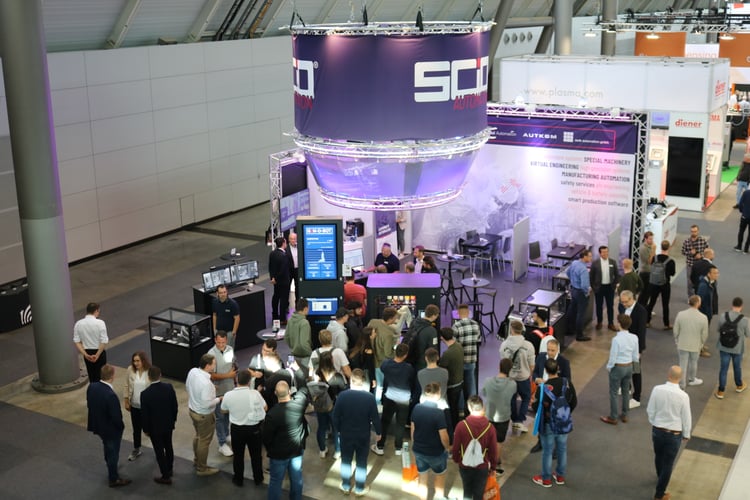AI, cloud and co.: the top 3 automation trends for 2024

It's no surprise: industrial change will continue to be dominated by automation and digitalization as we move into the New Year and beyond. However, the speed of innovation across the industry is growing ever greater in so many areas as time goes on, from smart (cloud) software to digital twins and AI solutions – as we’re an industry-wide driver of innovation, let’s take a closer look at the three most important trends of 2024 with our SCIO automation experts.
We expect the technological revolution to continue apace over the coming year. The automation and digitalization trends we've become accustomed to in recent years will still be setting the benchmark for our industrial sector. The boundaries between reality and the virtual space are becoming increasingly blurred and the focus on sustainable solutions continuing to gain traction. In the midst of this dynamic scenario, new, promising trends are also emerging, which our varied project portfolio clearly shows. Our SCIO experts will break all of this down for you below.
1. Artificial intelligence (AI) is becoming an indispensable partner:
Artificial intelligence is undergoing a fundamental transformation from a competitor to an indispensable colleague that said to significantly disrupt the industrial landscape in 2024. The recent hype surrounding the ChatGPT impressively underlines how AI and its sub-areas, such as machine learning (ML), are making rapid progress. When it comes to using it in industrial environments, AI applications will become absolutely crucial, quality control and predictive maintenance in particular. AI's ability to detect, signal and document errors and deviations in manufacturing processes by analyzing real-time data means that many potentially groundbreaking developments are just around the corner.
Martin Feichtgraber, Head of software develoment at VESCON Systemtechnik, illustrates this with an example: "At VESCON, we’re already using machine learning for continuous checks throughout the entire production process. We integrate automated camera inspections, particularly for complex components such as wire harnesses in the automotive sector. By learning from positive and negative examples, our system can detect errors in the cable routing independently by building up its own knowledge base - and identify NOK parts (not ok) at an early stage, thereby preventing costly delays and delivery failures."
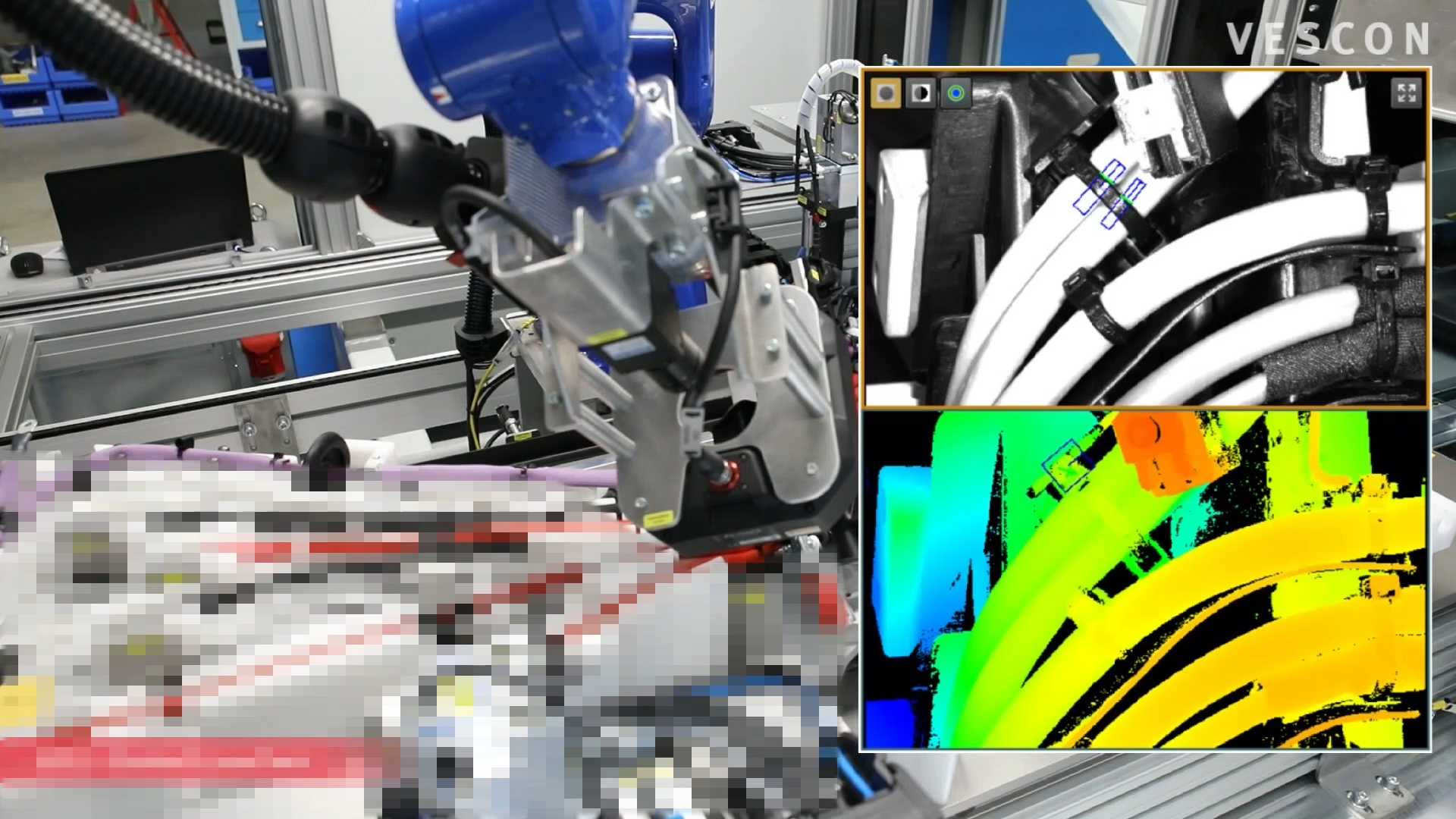
You can read the project report again here.
Quality is crucial, but the system needs to work seamlessly as well. Statistics from the past year have already highlighted the positive effects of efficient maintenance:
• Reducing maintenance costs by 40%• Reducing downtime by 70%
• Increasing overall equipment effectiveness (OEE) by 25-30%
In the not-too-distant future, we’ll be seeing machines on the market that can proactively communicate their "emotional state", carry out maintenance measures independently and prevent scheduled downtimes - a scenario that will be made possible by software and analysis techniques supported by AI, which is Martin Feichtgarber’s prediction: "In the months to come, rapidly advancing AI and ML solutions will emerge, which will need to be integrated into existing IT structures in a timely fashion to make sure that businesses can remain competitive. Ultra-flexible software and platform solutions with modular architecture such as our HIBERION PDL system and traceability software, will become even more important, as they enable smooth integration into as they can be smoothly integrated into processes, as well as AI and ML as a service, during ongoing operations. Here, for instance, we’re currently developing an AI-based OEE optimization system."
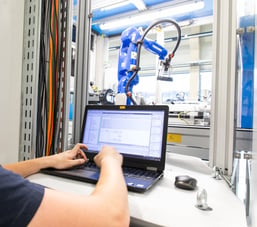 |
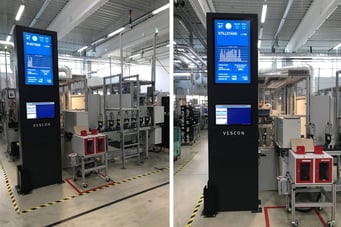 |
2. Digital twins are more than prestige projects for global players:
The aim of the digital twin is to map the entire life cycle of a product transparently and virtually, enabling a business to optimize and adapt processes and systems on a continuous basis over time. We recently had an in-depth interview with our Chief Digital Officer Ulrich Reiser where he explained what’s currently possible when using a digital twin. Click here to find our article on the digital twin concept.
However, taking a closer look at the concept in practice reveals that setting up the virtual model is still often seen as an additional expense, and so often goes unused, especially in medium-sized companies. We predict that this will soon be a thing of the past due to the huge number of benefits on offer, and the amount of competition on the horizon.
Integrating AI with augmented reality (AR) makes the interaction between humans and their digital twin a real game changer. AR inserts virtual elements such as the digital twin into the real world, presenting them to users as if they were part of their environment and allowing them to interact with them in real time.
Ulrich Reiser emphasizes: "From the planning and design phase through to commissioning, we’re gradually enriching the digital model of the plant with engineering data up to the digital twin, which we also envisage being used for remote services, training, running through change scenarios or plant optimization. With this concept, supplemented by solutions such as our intelligent HIBERION software for recording the real-time data that’s required, we’re creating synergies that are preparing our industry for the future and paving the way for the introduction of smart technologies in every manufacturing company on the planet."
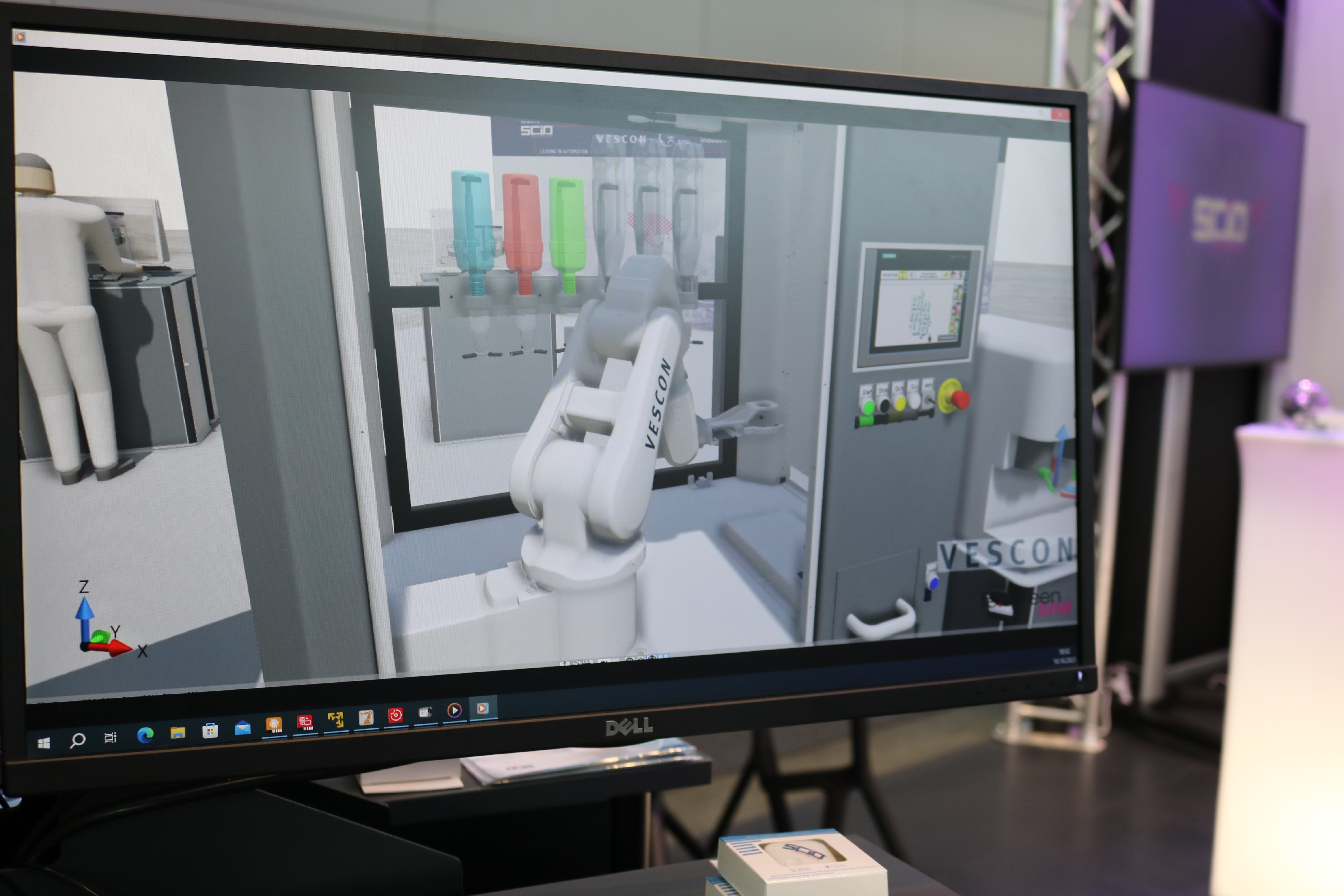
It goes without saying that these developments will significantly increase the amount and quality of collaboration between people and intelligent solutions. Where previously the focus was on what we as individuals can do with new technology, the possibilities we’ve mentioned are showing what technology can do for us now, and what it could potentially do for us in the near future.
3. The future will be "cloudy" with a chance of a secure system landscape
The trends show that we’re now in the era of a fully networked ecosystem. From real-time communication to AI-powered digitalization solutions, from the production line to logistics: this would be inconceivable without the ability to efficiently process and store large amounts of data in smart factories. What’s the driving force behind this seamless interaction?
Advanced cloud software platforms.
The cloud provides a robust and scalable environment for resource-intensive digitalization and automation solutions, including AI applications. As a key catalyst, it enables companies to process, store and directly access large amounts of data in an efficient way. Research from advisory firm Gartner showed that, by 2027, over 70% of companies will be relying on industrial cloud platforms to drive their businesses forward.
"In recent years, it’s become abundantly clear that many companies have been struggling to implement advanced technologies due to inadequate data architectures. Issues such as interface gaps, incompatible data formats and unsuccessful data transfers between different process steps were commonplace. These challenges underline the crucial importance of efficient cloud platforms. At SCIO, we are working on creating a standardized data model, establishing a structured data repository ("single source of truth") and developing missing interfaces to ensure seamless integration," said Ulrich Reiser.
The future certainly looks incredibly promising, but we mustn’t overlook the fact that a complex system landscape with many interfaces just bring numerous benefits to the table, we’ll have to grapple with significant security challenges. The increasing risk of hacking attacks, data theft and business interruptions underline the importance of increased investment in IT security. With cybercrime losses predicted to reach USD 8 trillion by 2024, protection against security risks is becoming a key priority on corporate investment lists, including our own. We strongly believe that safeguarding customer data is an essential cornerstone of all of our plant projects, and we made this commitment official this year by becoming successfully certified to the TISAX® standard (test and exchange procedure for information security in the automotive industry) at VESCON Automation.
Are you prepared for the technologies of tomorrow?
As an international E2E automation platform, we’re on-hand to support your company in implementing the digitalization and automation trends of tomorrow. Our comprehensive approach ranges from the seamlessly integrating secure system platforms to implementing pioneering AI and digitalization solutions such as the digital twin.
You can find out more about our innovative end-to-end solutions to prepare you for digital change here.



















